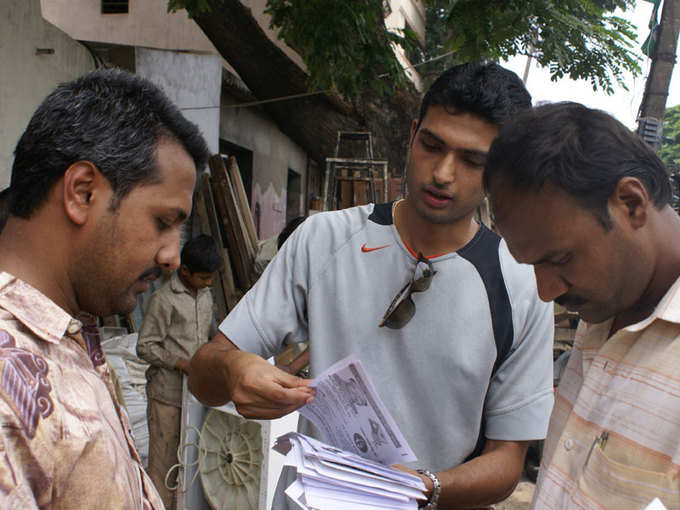 December 2016 marked 15 years since the designation of
December 2016 marked 15 years since the designation of As Abraham Lincoln, arguably America’s most famous President said, “He has a right to criticize, who has a heart to help.” While philanthropy typically is associated with monetary actions, volunteerism symbolizes social responsibility. It is perhaps the oldest form of personal giving and cuts across societal and economic barriers. Manifestations of the spirit of volunteerism can be found in human society whenever there was a country forming or heightened human suffering. For example, in the U.S., it could be traced to the times when the west was being conquered. From the need to produce food to adjusting to new climate and combat diseases, community volunteerism was vital. What is impressive is that the wonderful community spirit continued to exist in the American society, thereafter.
In 1736, Benjamin Franklin founded the first volunteer firehouse in the U.S. To this day, many small towns and cities have a volunteer fire department or more than 70% of firefighters in America are volunteers. Data presented in September 2015 showed that 62.2 million Americans, across all demographics and educational attainment had served as volunteers during the previous year. Many were engaged in food distribution; 9.2% in tutoring and teaching; a similar fraction in coaching and supervising in sports activities and helping in local hospitals in small communities. These volunteers are professors, doctors, small-shop owners, tradesmen, judges who come from all walks of life. The point is volunteerism is pervasive in all aspects of community life in the U.S. It is worth noting that volunteering work while at high school is a metric in most American college admissions. It is also a metric to go tuition free at some state community colleges. With such encouragement, there is a good chance that the volunteerism will continue to shape American society for ever.
In India, a much older and complex civilization, renunciation and charity are two highly venerated values of life. Volunteerism is an outcome of this and has therefore been more shaped by traditions and value systems rooted in the religion and cultural interactions. The tradition of shramdaan, offering to work in the service of humanity continues to be practiced by millions of Indians and thereby continues to create social capital. To cite some notable examples, Swami Vivekananda and his followers created the Ramakrishna Mission served by a new order of
Institutionalising volunteerism
According to a global Gallup survey of 2010 that measured volunteerism across countries, India ranked a not very flattering 28 on a civic engagement score, much below the US that was ranked at the top with a civic engagement score of 60. The score was calculated on three parameters including ‘donation of money’, ‘volunteered time’ and ‘helping a stranger’ where the allocation for India was 28%, 18% & 39% respectively. Our neighbours including Sri Lanka, Pakistan, Afghanistan and Bangladesh ranked much higher than India (with scores of 51, 42, 35 and 32 respectively). China however had a score of only 20, ranking it among the lower quadrant of nations.
Corporate volunteerism has slowly emerged as a relevant and viable form of ‘giving’ and has emerged as an integral form of corporate CSR. In India a trend that began with MNCs has increasingly been replicated by Indian companies. While Indian laws have made a 2% contribution of profits to charity by corporates above a certain size mandatory, employee volunteerism is over and above that. For corporates, offering their most valuable asset counts for more than just financial support to needy communities. By giving back, businesses can drive social change and employ their skills, resources and manpower to support organizations and working in the social sector. Benefits that companies can reap through corporate volunteer programs go beyond creating positive social and environmental impact. Volunteer programs also not only help organizations attract the best talent but also keep them engaged through causes and initiatives that they may be personally invested in. A transformative relationship between the organisation and the community ultimately helps enhance the triple bottom line that is framed on social, environmental and financial indicators.
Volunteerism and the National Skills Development Mission
Another important consideration is that around 60% of India’s population will be in the working age group by 2020. Can we see corporate volunteerism create enduring partnerships with the National Skills Development Mission to help meet the government’s target to skill and employ 500 million people by 2022? Given that
Conclusion
Volunteerism at the individual level needs to be encouraged and inculcated as a structured approach right from school and then through university and finally at the workplace to become an institutionalised and integral part of an individual’s life. HR professionals, should consider volunteerism as an important element while finalizing their selection of the candidate. There exists a huge opportunity for professionals across the value chain to volunteer their time and services – not just limited to doctors and teachers but also lawyers, architects, ad-professionals, engineers, scientists and several others. Due to healthier lifestyle, people live longer but the retirement age has not changed much; a lot of men and women have plenty to offer or volunteer to their community after retirement. The true potential of volunteerism can only be leveraged when it is recognised as an intrinsic part living in a community of people and of bringing about positive social change. India may be one the fastest growing economies but also has glaring disparities in terms of human development when looked at indicators of income, health, education and opportunity. Volunteerism, both institutional and individual can play an inexpensive and rewarding role in helping reduce some of these disparities.
References
• History of Volunteerism in America
• Civic Engagement Highest in Developed Countries
(Image Credits: Flickr)
(About the Author: This article has been contributed by S.N. Balakrishnan – Chancellor, Shiv Nadar University)